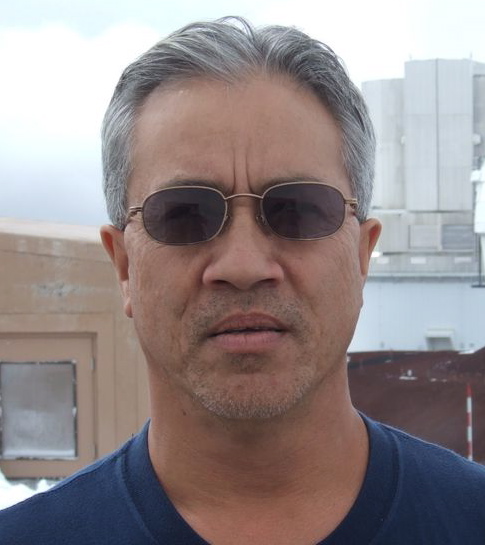NASA IRTF
Spring 2008 News
Last updated 03 March 2008
Proposal Deadline for August 1, 2008 - January 31, 2009
Fall 2008 semester observing proposals are due on Tuesday, April 1, 2008. Information and the application form (rev. Aug. 2007) can be found here. Available instruments are listed at irtfweb.ifa.hawaii.edu/Facility/. Remote observing is offered from any location with broadband Internet access for any project that utilizes IRTF instruments. Please refer to the remote observing site.
Telescope Allocation Committee
The current TAC members are Joshua Emery (SETI), Dave Glenar (New Mexico State U.), Eilat Glikman (Caltech), Michael S. Kelley (U. Central Florida), James Muzerolle (U. Arizona), and Russel White (U. Alabama).
New Cooperative Agreement
A cooperative agreement with NASA to fund IRTF operations from February 2008 to January 2013, has been approved. In addition to continuing operations, we are planning to undertake work to improve the image quality of the telescope. This will be pursued in two ways: One is to fabricate a new secondary mirror that will remove the spherical aberration in the primary mirror (see below). Another is that we will continue to improve the dome thermal environment by eliminating a major source of heat infiltration during the daytime through the dome skirt. In addition, we have submitted proposals to both NASA and the NSF to provide additional instrumentation. We are hoping to provide a replacement for CSHELL with NSF and NASA funding and to provide polarimetric observations of asteroids to obtain size estimates of NEOs.
Personnel Spotlight

|
Sammy Pung, the first employee to be spotlighted in our online news, is a member of the IRTF day crew that works as a team to keep the dome, shutter and all mechanical equipment operating smoothly. Sammy also maintains the air conditioning system (critical for good seeing) and keeps the mirror clean with regular CO2 washing.
|
|
Sammy began work as a mechanical technician in June 1982, two days after receiving an honorable discharge from the Navy after completing two tours of duty in the Persian Gulf. Sammy's personal time is mainly spent working on his 10-acre farm with his wife, Carrie. When he manages to find spare time, Sammy joins the RP Gang in volunteering to keep Big Island trails open and rides his Harley Davidson with his motorcycle club, Na Kane Oke Awawa.
|
Instrumentation Update
MIRSI Upgrade:
Eric Tollestrup and Charles Lockhart are upgrading MIRSI. This work should be completed in March 2008. The most obvious changes will be a new graphical user interface that will have the same look and feel as the facility instrument GUIs. In addition, various hardware, firmware, and software upgrades will make MIRSI more reliable and robust. Finally, new readout schemes will be implemented to improve the sensitivity, improve the fix pattern noise, and eliminate various readout artifacts. These upgrades are happening without taking MIRSI out of operation. When the new GUI is implemented, all MIRSI observers will need to get additional training on how to use MIRSI. Contact Eric Tollestrup for more details.
NSFCAM2 status:
NSFCAM2 status: This camera has been used on a conditional basis because of the high read noise, which decreases the sensitivity in the low-background filters (including J, H, and K). Several causes of the excess noise have been identified by Eric Tollestrup, and he will work on them after the MIRSI upgrade is finished. If the troubleshooting is successful, the read noise is expected to be about 18 to 20 e- rms. Some of the solutions require custom replacement components, which has resulted in delays. To check the status of this instrument before writing a proposal, contact John Rayner. NSFCAM2 is currently best suited for observations in the thermal infrared (3-5 µm), since at these wavelengths it is background limited and the image quality is excellent.
The SpeX guider can be used for 1-5 µm imaging. Although it is not optimal given its engineering-grade array (used for acquisition and guiding), it is still better than the current NSFCAM2 array at JHK. Observers who wish to use SpeX rather than NSFCAM2 for JHK imaging should consult with John Rayner.
CSHELL Upgrade:
The user GUI for CSHELL is being improved so that it has a format similar to that of SpeX. Please note that the macros were changed recently. Users should test their macros before observing.
New Secondary Mirror:
Eric Tollestrup has obtained an NSF grant to measure the spherical aberration of the primary mirror and to fabricate a new secondary mirror with a surface figure that removes the spherical aberration and other high-order aberrations. The first phase of this project, fabricating a prime focus instrument package and measuring the aberrations, has been completed. The analysis and characterization of the primary mirror show that it is actually an oblate ellipsoid, not a paraboloid as required, and has a turned-down edge over a larger area than expected. This results in significant spherical aberration, which will be corrected by the new secondary mirror. We expect a request for quotation for a new secondary mirror to go out soon.
Target-of-Opportunity Observing
We currently have an approved target-of-opportunity proposal to observe Type 1 supernovae at an early stage (within days of being discovered). This has been noted in the letter informing you of your IRTF time allocation. Up to one hour may be requested to allow these observations.
Science Highlights and Publications
Our Science Highlights page is updated regularly as we receive the latest highlights from you. These highlights are sent to our funding agencies, NASA and NSF, to keep them abreast of the exciting and useful science obtained at the IRTF. Please keep submitting your recent publications using the form provided on our website, or send your reprints to Karan Hughes (hughes@ifa.hawaii.edu). Please acknowledge the IRTF in your publications following the information shown here and include in your papers the name of the instrument used, as this helps to insure future funding of IRTF instruments.